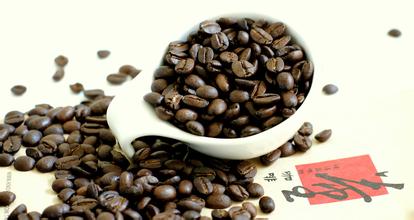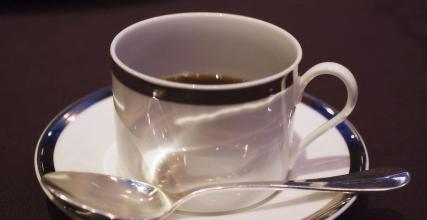Milk steam bubble flower video-pull flower is not suitable for what kind of milk
Milk steam bubble flower video-pull flower is not suitable for what kind of milk
The following video provided by Whole Latte Love shows the steps of drawing flowers in its entirety. Quickly turn to 1:10 for a detailed explanation. In the film, the barista advises quenching espresso before heating the milk, which is more convenient for drawing flowers, but also prepare hot milk quickly to retain the best flavor of espresso. After all, it only takes 10 to 20 seconds after the preparation of espresso to become bitter. As for other new techniques, it is up to you to try and find out the easiest way to draw flowers in a round cup. First pour the espresso into the bottom of the cup, then add a small amount of steamed milk and keep turning to blend. The skill of pouring milk into a cup is nothing more than speed and the height from the cup. Remember to pour milk steadily and slowly at a fairly high place, which contributes to the continuous fusion of milk and coffee. I suggest circular pouring. Let the milk and coffee be fully mixed with the milk pot on the table, and the big foam will be swept away and the foam will be finer. If the steam stick does not sink into the bottom of the kettle, the hot fresh milk and foam will not invade the river water, and it will be even more difficult to pull flowers. At this time, you might as well rotate the steam stick and merge these layers so that once the milk reaches 60-80 degrees Celsius, you can turn off the steam bar. Some baristas can know the temperature by touching it, while others listen to the tone of the steam to determine the temperature. You might as well do the experiment with a clip thermometer first, which will be more accurate.
Find the vortex. The function of this vortex is to pull the coarse foam below the liquid surface through the vortex to make the surface clean. There are many states of a vortex, each of which needs to be observed and remembered. This point is so deep, let me keep it simple. If you want to have a vortex, the sprinkler of the steam pipe should not be too deep under the milk noodles.
The sixth step is the problem of moving the flower cylinder down and up. The sprinkler is in good contact with the milk, that is, open the steam valve, and the vat moves down very slowly, and you will hear the steam of "eating"cut" with the milk (about the shear force, when we discuss the principle of milk foaming later, talk slowly! The sound made by it is commonly known as "the sound of breathing". The sound of air intake to human body temperature can no longer appear, otherwise, there will be a lot of coarse foam on the surface.
At this point, move the flower jar up a little bit (just a little bit, which is important, which is understood by many people as moving up continuously, which is very wrong), and let the steam sprinkler leave the cutting surface so that the sound of "eating" can not be heard. At this point, by adjusting the angle of the vat, remember that it is the angle, not the position of the sprinkler and the surface (very small angle adjustment), find the vortex, pull the coarse foam off the surface in the foaming stage, and continue until the temperature reaches the hot temperature.
The seventh step is to understand the state of milk after steam and how to deal with milk bubbles. After the milk is dismissed, it is not the ideal foam, but in a layered state. The lower layer is the heated milk, and the upper layer is the "foam" after discarding, so we have to deal with the milk after discarding.

Important Notice :
前街咖啡 FrontStreet Coffee has moved to new addredd:
FrontStreet Coffee Address: 315,Donghua East Road,GuangZhou
Tel:020 38364473
- Prev

Why do I play milk foam last pull flowers can not pull out-coffee pull flowers play milk foam skills
Why do I play foam last pull flower can not pull out-coffee pull flower play foam tips 1 in the pull flower cup pour enough ice milk (about 10 degrees Celsius). If you have plenty of time, put the cup in the refrigerator to cool down before using it. A cold cup can give you more time to prepare milk and reduce the chance that milk will boil. To make the best foam, prepare a portable
- Next

The reason for the different taste of washing and sun drying of coffee-honey treatment of coffee beans in the sun
Coffee causes different taste of washing and sun-drying-honey-treated coffee beans in the sun-washing method 1, under the same treatment, sun-dried beans will take away the obvious dry aroma of red wine, while washed beans are citrus honey fruit aroma. 2, both products will have obvious sour taste, similar to lemon and citrus fruits, but sun beans are more mellow. The obvious smell of red wine in the dried beans is in the finished product.
Related
- What is the meaning of lactic acid fermentation with coffee bean treatment?
- How to judge the state of foam by sound?
- How does the latte pull out the unicorn pattern? Come to get for a little trick to improve the flower pull!
- Will flower pulling affect the taste of the latte?
- Do you know the history of coffee?
- The difference between honey treatment and sun washing what is raisin honey treatment?
- What kind of milk can a novice use to make coffee foam to keep the foam longer? The correct method and skills of milking tutorial sharing
- Why do washed coffee beans taste sour? Flavor characteristics of washed Coffee
- Introduction to the skill of how to practice the size and height of water injection around the circle of hand-brewed coffee
- How do beginners practice coffee flower drawing from scratch?

